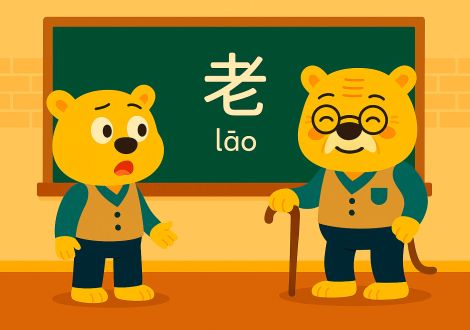Finally! You’ve reached the definitive guide to 的, that important – and sometimes even omnipresent – particle of the Chinese language.
We know that 的 often causes confusion due to its multiple uses. That's why, in this lesson, we’re going to break down the main ways in which this particle is used so you can tackle it with confidence.
的 as a possessive marker
This is the most common use of 的. It works like the apostrophe + "s" in English ('s). It can also be a possessive determiner if preceded by a personal pronoun.
Structure: Noun / Personal Pronoun + 的 + Noun
| Examples | ||
|---|---|---|
| hanzi | pinyin | meaning |
| 我的书 | wǒ de shū | My book |
| 他的车 | tā de chē | His car |
| 中国的文化 | zhōngguó de wénhuà | China’s culture |
| 小雨的电脑 | xiǎo yǔ de diànnǎo | Xiaoyu’s computer |
Likewise, when 的 accompanies a personal pronoun, if the noun is omitted, it becomes a possessive pronoun (mine, yours, his/her...).
| Examples | ||
|---|---|---|
| hanzi | pinyin | meaning |
| 这是我的 | zhè shì wǒ de | This is mine |
| 哪个是你的? | nǎge shì nǐ de? | Which one is yours? |
| 那个手机是他的 | nà ge shǒujī shì tā de | This phone is his |
It’s common to omit 的 when the noun in question is something very close to us, i.e. family members, pets, friends... This also applies to schools (学校、大学), offices (公司) and classes (班).
| Examples | ||
|---|---|---|
| hanzi | pinyin | meaning |
| 他妈妈的名字 | tā māma de míngzì | His mother’s name |
| 你们班有几个学生? | nǐmen bān yǒu jǐ ge xuéshēng | How many students are there in your class? |
| 我爱我猫 | wǒ ài wǒ māo | I love my cat |
的 as an adjective marker (noun modifier)
When an adjective or descriptive phrase qualifies a noun, 的 must be placed between them.
Structure: Adjective / Phrase + 的 + Noun
| Examples | ||
|---|---|---|
| hanzi | pinyin | meaning |
| 漂亮的女孩 | piàoliang de nǚhái | Beautiful girl |
| 有意思的电影 | yǒuyìsi de diànyǐng | Interesting movie |
| 好吃的菜 | hǎochī de cài | Delicious food |
If the adjective is monosyllabic, 的 can be omitted:
| Examples | ||
|---|---|---|
| hanzi | pinyin | meaning |
| 新书 | xīn shū | New book |
| 老朋友 | lǎo péngyou | Old friend |
We can also omit the noun if it has already been mentioned or if we can tell what it is from the context. For example:
| Example | ||
|---|---|---|
| hanzi | pinyin | meaning |
| 你喜欢红色的衣服还是白色的? | nǐ xǐhuan hóngsè de yīfu háishi báisè de? | Do you like red clothes or white? |
Since we already know that the speaker is referring to clothing, there’s no need to mention 衣服 again after 白色.
的 for relative clauses
When a verbal phrase describes a noun, 的 acts as a connector between the two. In many languages we call them relative clauses and we usually use relative pronouns to connect the noun with the phrase.
Structure: Verb / Phrase + 的 + Noun
| Examples | ||
|---|---|---|
| hanzi | pinyin | meaning |
| 他写的书 | tā xiě de shū | The book he wrote |
| 昨天来的人 | tā zuò de gōngzuò | The job he does |
| 他做的工作 | hǎochī de cài | Delicious food |
| 昨天买的衣服 | zuótiān mǎi de yīfu | The clothes that I bought yesterday |
Adjective + 的 for nominalization
When an adjective is combined with 的, it turns into a noun. We call this process nominalization. Let's see it in action with some examples.
| Examples | ||
|---|---|---|
| hanzi | pinyin | meaning |
| 高的在前面 | gāo de zài qiánmiàn | The tall ones, step to the front |
| 年轻的喜欢上网 | niánqīng de xǐhuān shàngwǎng | Young people like to browse the internet |
Exercises
Let’s practice translating these phrases into Chinese!
The house I bought
My new computer
Is this book yours?
The dish my father cooks
I like green
Answers:
The house I bought → 我买的房子
My new computer → 我的新电脑
Is this book yours? → 这本书是你的吗?
The dish my father cooks → 我爸爸做的菜
I like green → 我喜欢绿色





